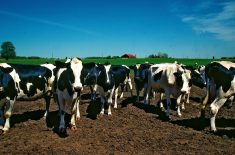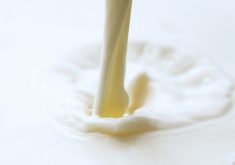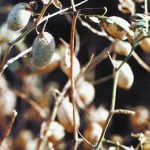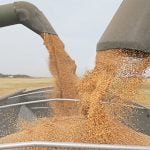Dairy Farmers of Ontario is reassessing some of its policies and emergency preparedness strategies following the mass milk dumping caused by the Christmas blizzard.
Mark Hamel, Region 11 board member, didn’t hesitate to accept responsibility for poor communication throughout the storm when he spoke to attendees at the Grey Bruce Farmers’ Week Dairy Day Jan. 6.
Why it matters: Dairy farms rarely have to dump milk, so the Christmas 2022 storm created challenges as it was so widespread.
Read Also
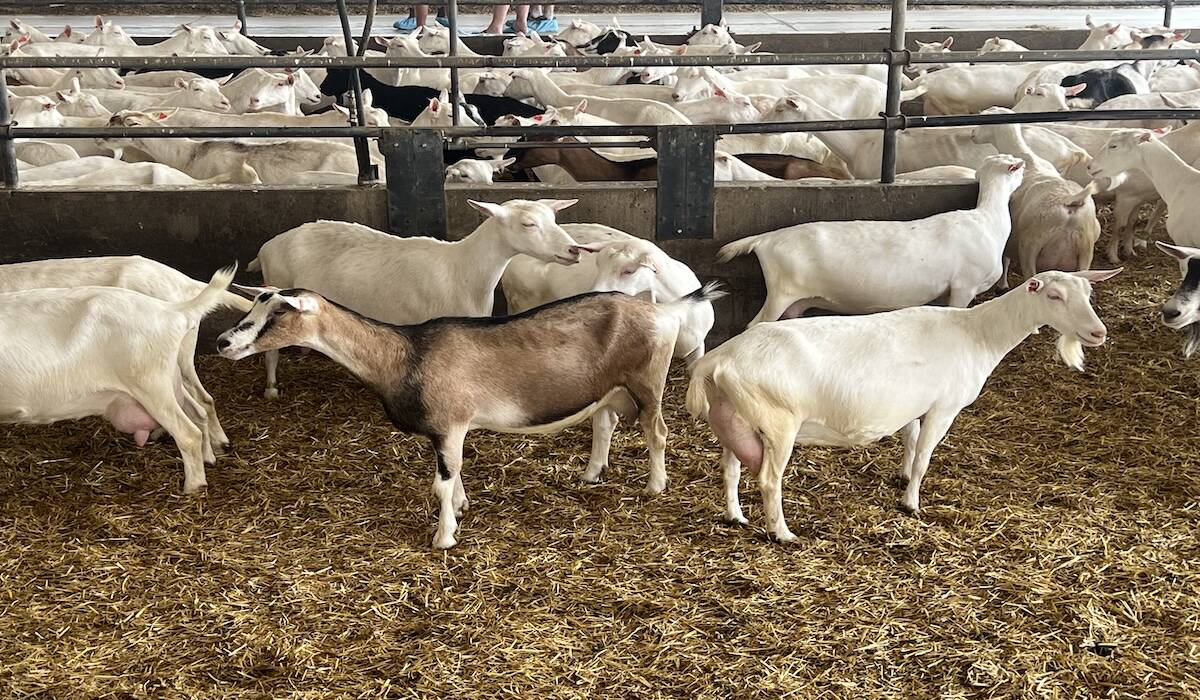
Ontario dairy goat producers move toward forming provincial board
Creation of a Dairy Goat Board under the Ontario Farm Products Marketing Commission may be voted on by early 2026.
“We didn’t have a good crisis emergency planning in place. I’ll take ownership of that,” said Hamel. “Not all of it, but my share of it. We didn’t have a strategy in place.”
Most of the dairy system shut down from Dec. 23 to Dec. 26 when a storm ravaged Ontario, leaving roads impassable, trucks in ditches and plants with backlogs.
The Grey Bruce region endured road closures and townships halted their plows due to limited visibility and abandoned vehicles littering roads and ditches.
On Dec. 24, the DFO issued a directive for producers to dispose of milk if their scheduled pick-ups didn’t occur. Social media was rife with images and videos of dairy producers pouring out thousands of litres.
Some said their multi-generational farms had never had to do such a thing before.
[RELATED] Opinion: Thoughts on dumping milk during COVID-19
Hamel said the existing policy, which addresses skimming milk for overproduction, has always served the membership well but it fell short in the face of the storm.
“It’s a good policy for winter storms, outages, whatever the case may be, and I’m strong on keeping that policy in place,” he said.

Paul Vickers, a Meaford dairy farmer, expressed his frustration, calling out the DFO’s “squirrel governance” that, in his opinion, caters to singular complaints rather than industry needs.
“I’ll be honest, I’ve dumped milk other years, and nobody really gave it a second thought or a second glance,” said Vickers. “Why is it any different when one or two or a few people do it, as opposed to a larger percent of the producers?”
Hamel said the decision to initiate a two-day limit to dispose of milk was a one-time directive, not a policy change.
Transporters told the DFO that even if every truck, including those stuck in snow drifts and ditches, was able to access dairies, it was a physical impossibility to handle the milk volumes impacted within the three-day storm.
It took two days to return to normal, which was no small feat considering the storm’s magnitude and reach. The event affected 45 per cent of the DFO’s 3,300 members, said Hamel.
Ron Groen, Dairy Day emcee and Bruce County dairy farmer, shared his support for the DFO decision.
“We dumped all of our milk once, and some of the milk would have been on the third day when trucks were driving again,” said Groen, who lives three kilometres from Gay Lea’s Teeswater plant.
The DFO said it will compensate producers impacted by the storm through a cost recovery plan, which includes a 2.5 cents per litre reduction to milk blend prices in January.
Without the storm, the blend price would have decreased by one to 1.5 cents due to an expected seasonal drop in orders and the resulting skimming, Hamel said.
“To support your fellow dairy producers, our system, our supply management, and our industry, I believe, was the right decision.”
Groen said if he had made an insurance claim, everyone’s premiums would have gone up for the next decade, whether or not they had dumped milk.
“Now the DFO is covering it and … we’re not going to get affected on the insurance side, but we’re going to get affected on the blending side for one month.”
Hamel said reviewing DFO policy language, emergency strategies, transportation systems and member feedback could lead to improvements.
“We have tried to do a better job in the past, and clearly we didn’t do a good enough job this time,” he said.
“We’re taking that away, and we are going to try and correct the situation, make sure we have better emergency and crisis situations in place, clearly documented to producers, transporters and processors.”








